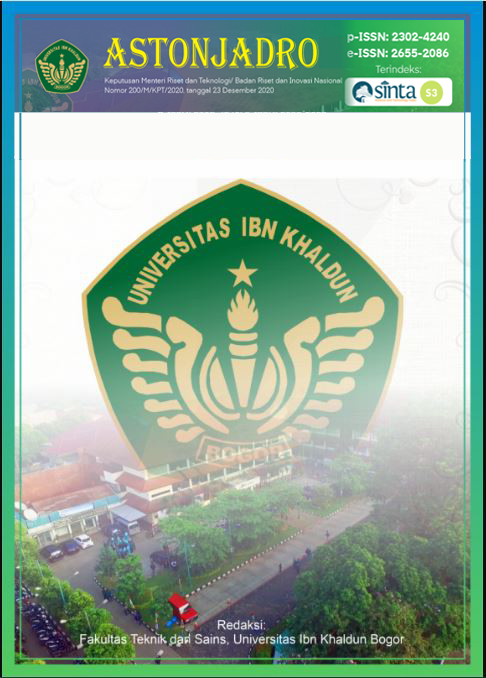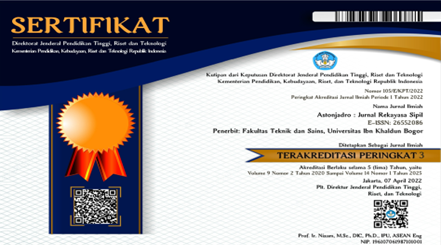The Analysis of Bale Banjar Shifted Function: Socio-Cultural and Economy Implications in Kuta, Bali
DOI:
https://doi.org/10.32832/astonjadro.v14i1.17202Keywords:
bale banjar; functional transformation; socio-cultural implications; economic implications; modern tourism; Kuta; Bali.Abstract
This research analyzes the shift in the function of bale banjar in Kuta District, Bali, in the context of modern tourism development. This shift in function includes a transformation from a center for social and cultural activities into a commercial and multifunctional space. This research also examines the socio-cultural and economic implications of these changes. Data was obtained through qualitative methods with in-depth interviews, observation and documentation studies. The research results show that modern tourism has a significant impact on changes in the function and form of bale banjar, as well as changing the social and economic dynamics of local communities. These changes affect traditional cultural values and the social identity of communities, necessitating appropriate conservation and adaptation strategies to maintain a balance between tourism development and preservation of traditional values. This research provides an important contribution in understanding the dynamics of bale banjar transformation and its implications for Balinese society in the modern tourism era.
References
Birer, E., & Çalışır Adem, P. (2022). Role of public space design on the perception of historical environment: A pilot study in Amasya. Frontiers of Architectural Research, 11(1), 13–30. https://doi.org/10.1016/j.foar.2021.09.003
Carmona, M. (2019). Principles for public space design, planning to do better. Urban Design International, 24(1). https://doi.org/10.1057/s41289-018-0070-3
Gantini, C. (2014). Arsitektur “Bale Banjar” Adat sebagai Representasi Arsitektur Pertahanan Masyarakat Denpasar di Bali. Seminar Nasional Arsitektur Pertahanan, April.
Gantini, C., & Hanan, H. (2017). The Impact of Tourism Industry on the Sustainability of Traditional Bale Banjar in Denpasar. In Proceedings of the 6th International Conference of Arte-Polis. https://doi.org/10.1007/978-981-10-5481-5_17
Gantini, C., Prijotomo, J., & Saliya, Y. (2012). Guna dan fungsi pada Arsitektur Bale Banjar di Denpasar Bali. Temu Ilmiah IPLBI.
Gantini, C., Prijotomo, J., & Saliya, Y. (2014). ‘Gerenceng bale banjar adat’: change and continuity in Balinese architecture. International Journal of Academic Research, 6(1). https://doi.org/10.7813/2075-4124.2014/6-1/a.19
Hening Wagiswari, P. A., Paramadhyaksa, N. W., & Suartika, G. A. M. (2019). Dinamika Fungsi Ruang di Bale Banjar Titih Denpasar, Bali. RUANG-SPACE, Jurnal Lingkungan Binaan (Space : Journal of the Built Environment), 6(2). https://doi.org/10.24843/jrs.2019.v06.i02.p04
Juniastra, I. M. (2021). Perkembangan Arsitektur Bale Banjar Ditinjau dari Fungsi dan Pelestarian Budaya Bali. Sinektika: Jurnal Arsitektur, 18(1). https://doi.org/10.23917/sinektika.v18i1.13309
Mahastuti Ni Made Mitha, L. G. W. (2018). A Study on Decorative Ornaments of Bale Banjar Pekandelan Legian Tengah in Desa Adat Legian, Kuta. The 1st International Conference on Cultural Communication and Space (ICCCS) and the 9th International Seminar on Vernacular Settlements (ISVS), 20–28. https://www.researchgate.net/profile/Gede_Laskara/publication/342476983_A_Study_on_Decorative_Ornaments_of_Bale_Banjar_Pekandelan_Legian_Tengah_in_Desa_Adat_Legian_Kuta/links/5ef617ae92851c52d6fdf8cc/A-Study-on-Decorative-Ornaments-of-Bale-Banjar-Pekandel
Mappasere, S. A., & Suyuti, N. (2019). Pengertian Penelitian Pendekatan Kualitatif. Metode Penelitian Sosial, 33.
Maulana, A., Fitri, C., & Pradjwalita, P. (2020). POLA MUSIMAN KUNJUNGAN WISATAWAN MANCANEGARA KE BALI Seasonal Pattern of Foreign Tourist Arrivals to Bali. Jurnal Kepariwisataan Indonesia, 14(2).
Proaño, V. G. V., López Rueda, C. P., Vega, N. A. L., & Cid, E. F. (2023). SOCIAL AND SPATIAL PATTERNS: A COMPARATIVE STUDY BETWEEN TWO PUBLIC SPACES IN THE CITY OF QUITO. Urbano, 26(47), 96–109. https://doi.org/10.22320/07183607.2023.26.47.08
Sanjaya, A. A. N. A., & Juliarthana, I. N. H. (2019). PEMANFAATAN BALE BANJAR SEBAGAI RUANG KREATIVITAS ANAK MUDA DI KOTA DENPASAR. Sustainable, Planning and Culture (SPACE) : Jurnal Perencanaan Wilayah Dan Kota, 1(1). https://doi.org/10.32795/space.v1i1.261
Suryawati, P. (2018). REAKTUALISASI FUNGSI BALE BANJAR DI KOTA DENPASAR. Dharmasmrti: Jurnal Ilmu Agama Dan Kebudayaan, 18(1). https://doi.org/10.32795/ds.v1i18.103
Suwardani, N. P., Paramartha, W., & Suasthi, I. G. A. (2018). BALE BANJAR AND ITS IMPLICATIONS ON THE EXISTENCE OF BALI SOCIOCULTURAL COMMUNITIES. PROCEEDING BOOK INTERNATIONAL SEMINAR ON TOLERANCE AND PLURALISM IN SOUTHEAST ASIA THE FACULTY OF RELIGIOUS AND CULTURAL SCIENCE.
Zed, M. (2008). Metode Penelitiaan kepustakaan. In Metode Penelitian Kepustakaan.
Downloads
Published
How to Cite
Issue
Section
License
Copyright (c) 2025 ASTONJADRO

This work is licensed under a Creative Commons Attribution-ShareAlike 4.0 International License.
Paper submitted to ASTONJADRO is the sole property of the Astonjadro Journal. Unless the author withdraws the paper because he does not want to be published in this journal. The publication rights are in the journal Astonjadro.ASTONJADRO
LICENSE
This work is licensed under a Creative Commons Attribution-ShareAlike 4.0 International License.
Based on a work at http://ejournal.uika-bogor.ac.id/index.php/ASTONJADRO













